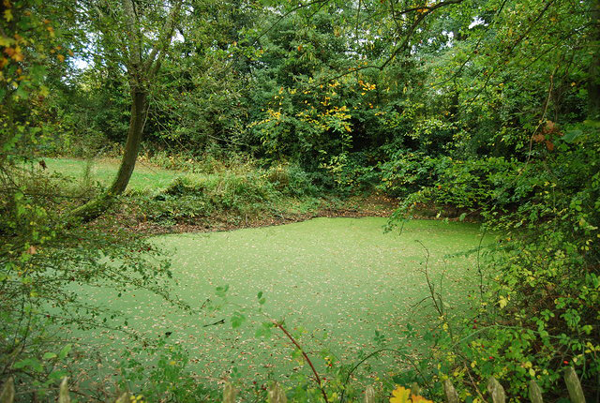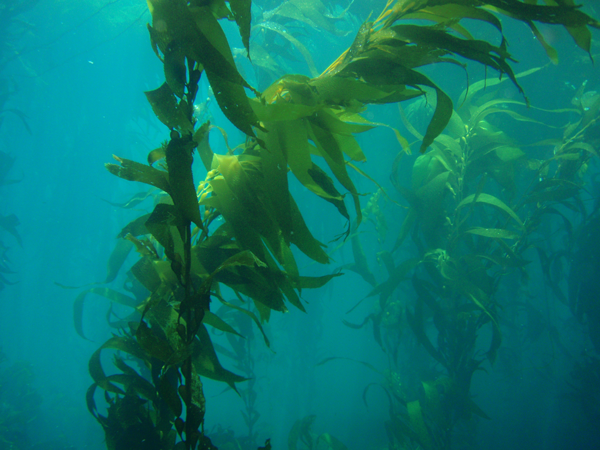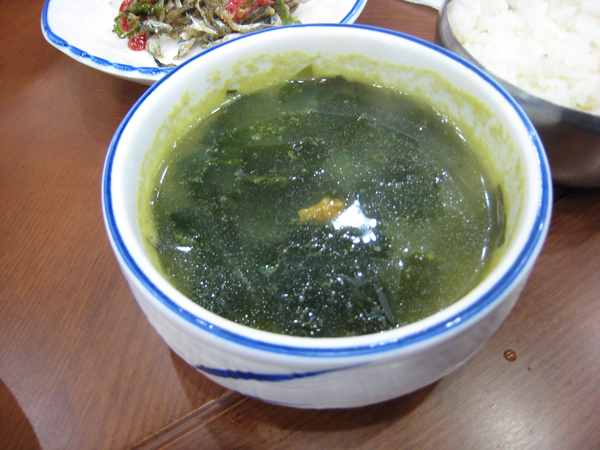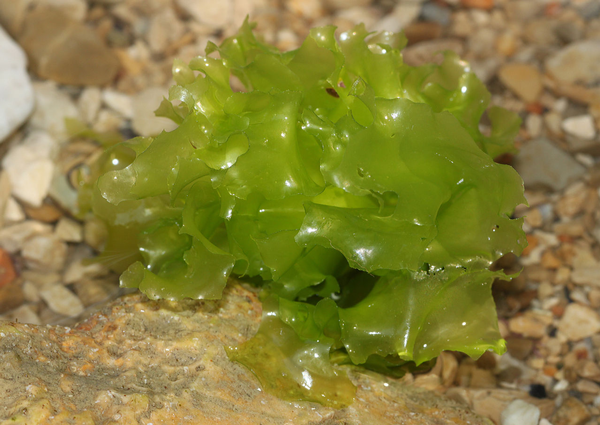Algae
by Andrew Boyd
Today, scum of the earth. The University of Houston's College of Engineering presents this series about the machines that make our civilization run, and the people whose ingenuity created them.
If I mention the word algae, what comes to mind? If you're like me you probably visualize something green and slimy floating on a pond — a pond you'd just as soon stay away from. But algae aren't only misunderstood; they're also at the forefront of research.

A pond coated in algae. Photo Credit: N Chadwick/Geograph
"Algae" is a much broader classification than most people realize. The actual definition is quite detailed, but a pretty good descriptive analogy is "plants that grow in the water." Algae come in all shapes and sizes. Most, but certainly not all, are microscopic. The larger forms we typically refer to as seaweed, with the giant kelp taking top honors. Unlike plants, algae don't have roots to draw nutrients from the soil. Instead, nutrients are taken directly from the water. Most importantly, like plants, algae use photosynthesis to create and store energy.

An underwater plant utilizing photosynthesis. Photo Credit: Wikimedia Commons/NOAA
Algae get credit for their important role in creating the air we now enjoy. At a time when the earth's hot atmosphere was flush with carbon dioxide but wanting for oxygen, algae floated to the rescue. Algae are as important in the history of human life as the first creatures who wriggled from the oceans onto dry land.
So it's no surprise that engineers envision a future for algae that's as bright as the past. Algae are an excellent food source, high in proteins and carbohydrates, good in sushi. Yet how many of us can imagine consuming an entire bowl full?

A bowl of algae soup. Photo Credit: Wikimedia Commons/karendotcom127
But food isn't the only potential use for algae. One of the more promising possibilities is as fuel. Like corn and other plants, algae contain oil. Some species contain a lot. When squeezed out, this green crude can be refined into biodiesel. And the remaining solids are quite nutritious. Even if we're personally averse to the idea of algae chips, they've proven a great food supplement for livestock. And lest we forget, while algae are growing they're making oxygen — an estimated three-quarters of what we find in our air.
Yet, for all their good qualities, algae's very strengths also prove a detriment. Fertilizers that make their way from land into water prove a perfect source of nutrients for algae to thrive on. In parts of the world algae have completely transformed ecosystems, creating a pea soup that chokes life from the water. In 2014, a bloom of microscopic algae in Lake Erie left a half million people in Toledo, Ohio without a safe source of drinking water. In 2013, China's Yellow Sea turned bright green from a bloom of sea lettuce. The pictures are quite remarkable.

A piece of sea algae. Photo Credit: Wikimedia Commons/H.Krisp
So, like most everything, algae present both promises and pitfalls. That's why we invest in research to sort out what works from what doesn't. Today, we're building a better world — with algae.
I'm Andy Boyd at the University of Houston, where we're interested in the way inventive minds work.
(Theme music)
For a related episode, see ALGAE BURGERS.
For pictures of the algal bloom in the Yellow Sea, see: http://www.theguardian.com/environment/2013/jul/04/china-algal-bloom-yellow-sea-green. Accessed February 17, 2015.
M. Edwards. The Tiny Plant That Saved Our Planet. April 14, 2010. From the Algae Industry Magazine website: http://www.algaeindustrymagazine.com/part-one-the-tiny-plant-that-saved-our-planet/. Accessed February 17, 2015.
Energy 101: Algae-to-Fuel. From the energy.gov website: http://energy.gov/eere/videos/energy-101-algae-fuel. Accessed February 17, 2015.
This episode first aired on February 19 , 2015.